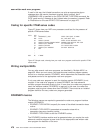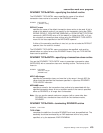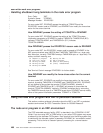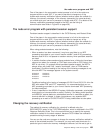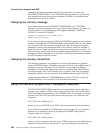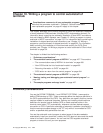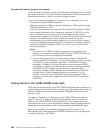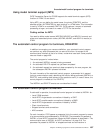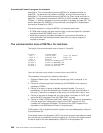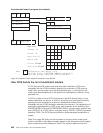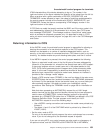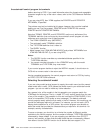For an overview of autoinstall, see the
CICS Resource Definition Guide
. You should
also read the sections in the same manual that describe the CEDA commands that
create the environment in which your control program can work.
If you choose automatic installation for some or all of your terminals, you must:
v Create some model TERMINAL definitions.
v Define the terminals to VTAM, so that their definitions in VTAM match the model
TERMINAL definitions in CICS.
v If you are using model terminal support (MTS), define the MTS tables to VTAM.
v Use the default autoinstall control program for terminals (DFHZATDX), or write
your own program, using the source-code of the default program and the
customization examples in this chapter as a basis. (You can write an entirely new
program if the default program does not meet your needs, but you are
recommended to try a default-based program first.) You can write your program
in any of the languages supported by CICS—the source of the default program is
provided in assembler language, COBOL, PL/I, and C. You can rename your
user-written program.
Notes:
1. If you use the VS COBOL II compiler to compile your autoinstall control
program (or to compile the supplied COBOL version, DFHZCTDX) you must
run the program under the Language Environment®.
2. You can have only one active autoinstall control program to handle both
terminals and APPC connections. You specify the name of the active program
on the AIEXIT system initialization parameter. The DFHZATDY program
described in “Chapter 12. Writing a program to control autoinstall of APPC
connections” on page 513 provides the same function for terminal autoinstall
as DFHZATDX, but in addition provides function to autoinstall APPC
connections initiated by BIND requests. Both DFHZATDX and DFHZATDY
provide function to install shipped terminals and connections. So, for
example, if you want to autoinstall APPC connections as well as VTAM
terminals, you should use a customized version of DFHZATDY, rather than
DFHZATDX.
Coding entries in the VTAM LOGON mode table
CICS uses the logmode data in the VTAM LOGON mode table when processing an
autoinstall request. Autoinstall functions properly only if the logmode entries that you
define to VTAM have matches among the model TERMINAL definitions that you
specify to CICS.
The tables in “Appendix A. Coding entries in the VTAM LOGON mode table” on
page 767 show, for a variety of possible terminal devices, what you must have
coded on the VTAM MODEENT macros that define, in your logmode table, the
terminals that you want to install automatically. Between them, the tables show the
values that must be specified for each of the operands of the MODEENT macro.
Some of the examples in the appendix correspond exactly to entries in the
IBM-supplied logon mode table called ISTINCLM. Where this is so, the table gives
the name of the entry in ISTINCLM.
the autoinstall control program for terminals
486
CICS TS for OS/390: CICS Customization Guide



